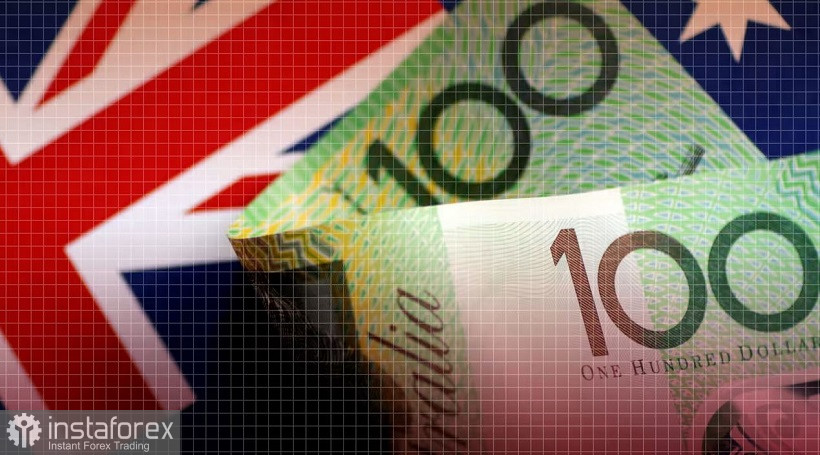The Australian dollar paired with the US currency appeared in the area of annual lows, in the range of 0.6830-0.6870. This week, AUD/USD bulls once again failed to conquer the key 0.7000 mark, which now plays the role of resistance rather than support. Just the day before yesterday, the pair approached the borders of the 70th figure, but traders hurried to take profits, thereby extinguishing the upward momentum. As a result, the initiative was expected to be intercepted by the AUD/USD bears, who are now trying to build on their success. However, the downward dynamics is rather sluggish: downward counterattacks are accompanied by upward pullbacks, so it's too early to talk about the unconditional dominance of bears.

The AUD/USD pair is declining mainly due to the general strengthening of the US currency. The greenback was under slight pressure on Wednesday, but recovered quickly enough. Federal Reserve Chairman Jerome Powell's speech disappointed dollar bulls, who were hoping to hear an "ultra-hawkish" position, the essence of which is to raise the rate by 75 points in July, and probably in September. But Powell only said that the central bank intends to further tighten monetary policy, but the pace of rate hikes will be determined from meeting to meeting, depending on the dynamics of inflationary growth.
Such a diplomatic response was not to the liking of the supporters of a strong dollar, after which the greenback was under pressure throughout the market. On the other hand, the logic of Powell's behavior is understandable: he saved himself a place to maneuver without driving himself into the trap of his own obligations. High inflation has become a problem not only of an economic, but also of a political nature, so the head of the Fed was criticized by both the left and the right. Democrats expressed concern about a possible recession and rising unemployment due to a rate hike, Republicans, on the contrary, talked about Powell's sluggishness. In their opinion, the rate should have been raised earlier, acting, so to speak, ahead of the curve. In such circumstances, Powell could not voice an excessively decisive or too soft position. In general, the dollar bulls did not like Powell's speech, although the US dollar index regained lost positions on Thursday.
Returning to the Australian currency, it should be noted that the aussie was under pressure from its own fundamental factors this week. The minutes of the Reserve Bank of Australia's June meeting were disappointing. Let me remind you that the RBA in June raised the rate by 50 points at once, which surprised traders a lot, who for the most part expected a 25-point hike. Moreover, the RBA actually announced further steps to tighten monetary policy. In an accompanying statement, the central bank indicated that the size and timing of future increases "will be determined by incoming data and an assessment of the prospects for inflation and the labor market." Taking into account the results of the June meeting, market participants increased their hawkish expectations. The minutes of the June meeting were supposed to reflect the belligerent attitude of the RBA, allowing for the option of raising the rate at the next meeting by 40 or 50 points.
However, the published document did not please AUD/USD bulls. The central bank indicated that raising the rate by 25 basis points at each meeting this year "will be a quick tightening." It is noteworthy that RBA Governor Philip Lowe later stated that the members of the central bank chose between a 25-point and 50-point increase at the June meeting (as a result, they leaned in favor of the second option). According to him, the members of the central bank will make a similar choice at the July meeting. He made it clear that much will depend on the dynamics of inflation and the labor market.
Thus, the Fed, despite all of Powell's doubts in the public plane, looks more resolute and aggressive compared to the RBA. If the US central bank increases the interest rate by 75 points in July (which is very likely), then the markets will take into account the probability of its growth to the level of 3.5% by the end of this year. This rate level will be the highest level among the interest rates of other major world central banks.
This factor pushes the AUD/USD pair down in the background. The Australian dollar could not turn the situation in its favor, even due to the hawkish intentions of the RBA. Corrective bursts fade quite quickly, especially when approaching the level of 0.7000. All this suggests that short positions on the AUD/USD pair are still relevant.
From a technical perspective, the pair on the daily chart is located between the middle and lower lines of the Bollinger Bands indicator and under all the lines of the Ichimoku indicator, which in turn demonstrates a bearish Parade of Lines signal. The first, and so far the main target of the downward movement is the 0.6850 mark – this is the lower line of the Bollinger Bands indicator on the same timeframe.
 English
English 
 Русский
Русский Bahasa Indonesia
Bahasa Indonesia Bahasa Malay
Bahasa Malay ไทย
ไทย Español
Español Deutsch
Deutsch Български
Български Français
Français Tiếng Việt
Tiếng Việt 中文
中文 বাংলা
বাংলা हिन्दी
हिन्दी Čeština
Čeština Українська
Українська Română
Română

